Incident Media Photographs
Could not determine your location.
Williams Mine Fire-GPNF
Unit Information
Incident Contacts
- Mt. Adams Ranger DistrictPhone:509-395-3402Hours:8 a.m. to 4:30 p.m. Mon. - Sat.
Photographs Gallery
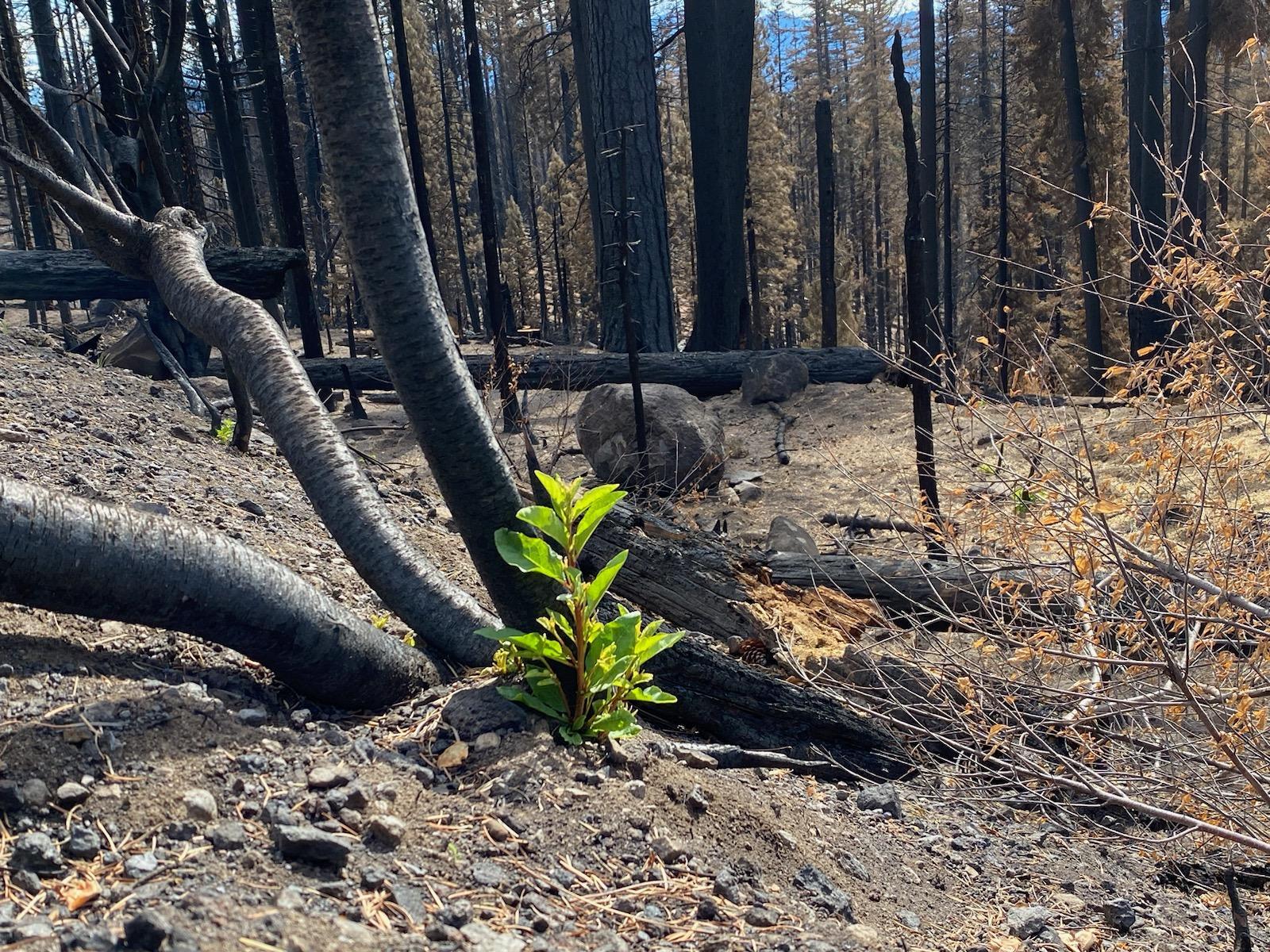
New growth is already sprouting from the roots of some plants in the Williams Mine Fire

The Wicky Shelter was wrapped in protective fabric and fire lines were constructed around it to protect it from the Williams Mine Fire.

Some areas of the Williams Mine Fire burned in patches. This is the burn scar from the 2012 Cascade Creek Fire, with varying amounts of vegetation.

A major problem on Williams Mine Fire has been dealing with large quantities of slash and woody debris. This ranges from low branches trimmed off trees to large logs from the many trees killed by previous fires. In some areas, the best option has been to move the debris away from the fire and stack it in a huge pile. This pile, known as "Slash Mountain", will be burned during the winter. In other areas, slash was chipped or scattered outside of the burn area.
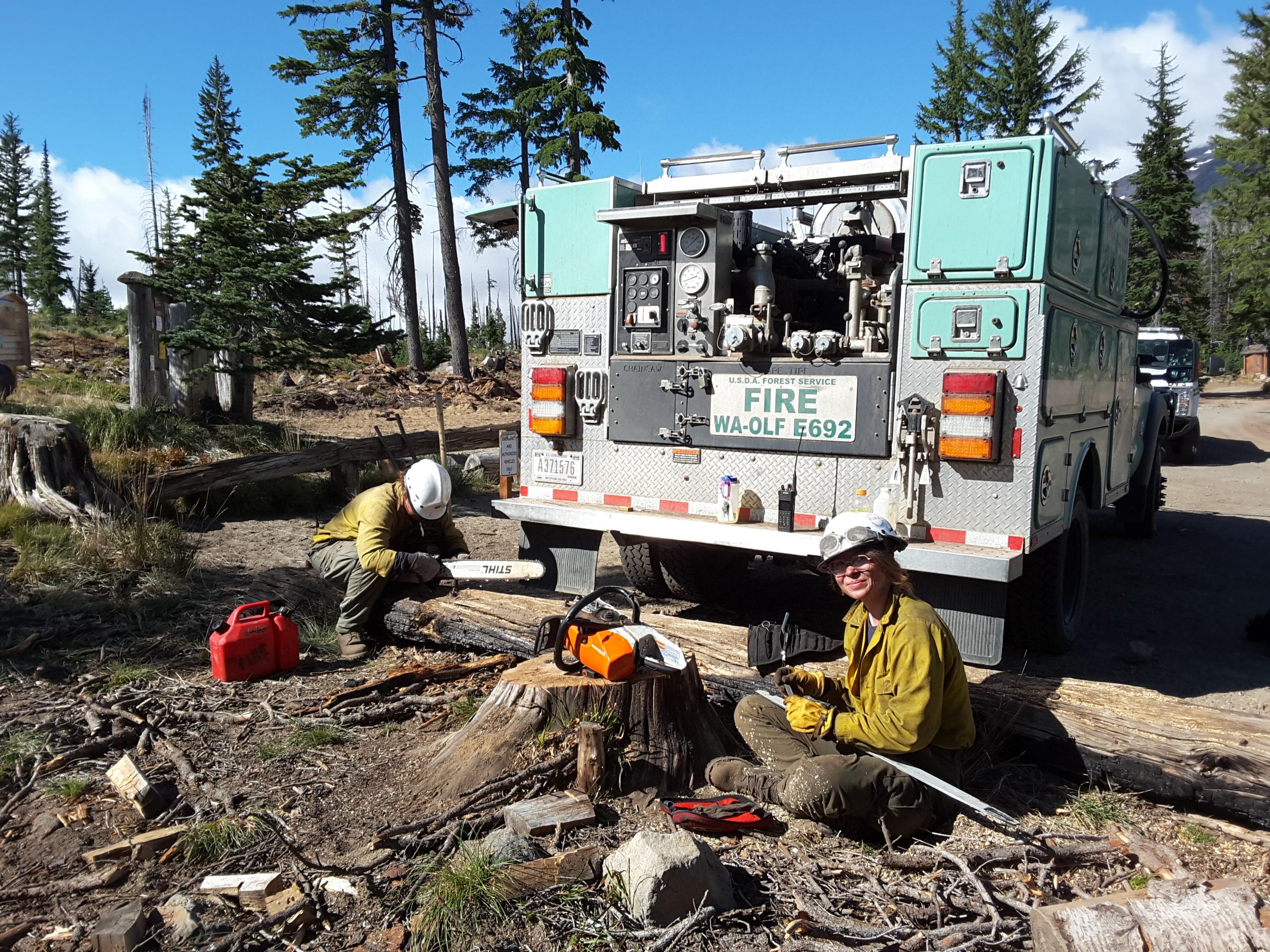
Chainsaws have received a lot of hard use on the fire. An engine crew monitoring the north edge of the fire and doing lookout duty at the South Climb Trailhead does chainsaw maintenance on 9-14-24.
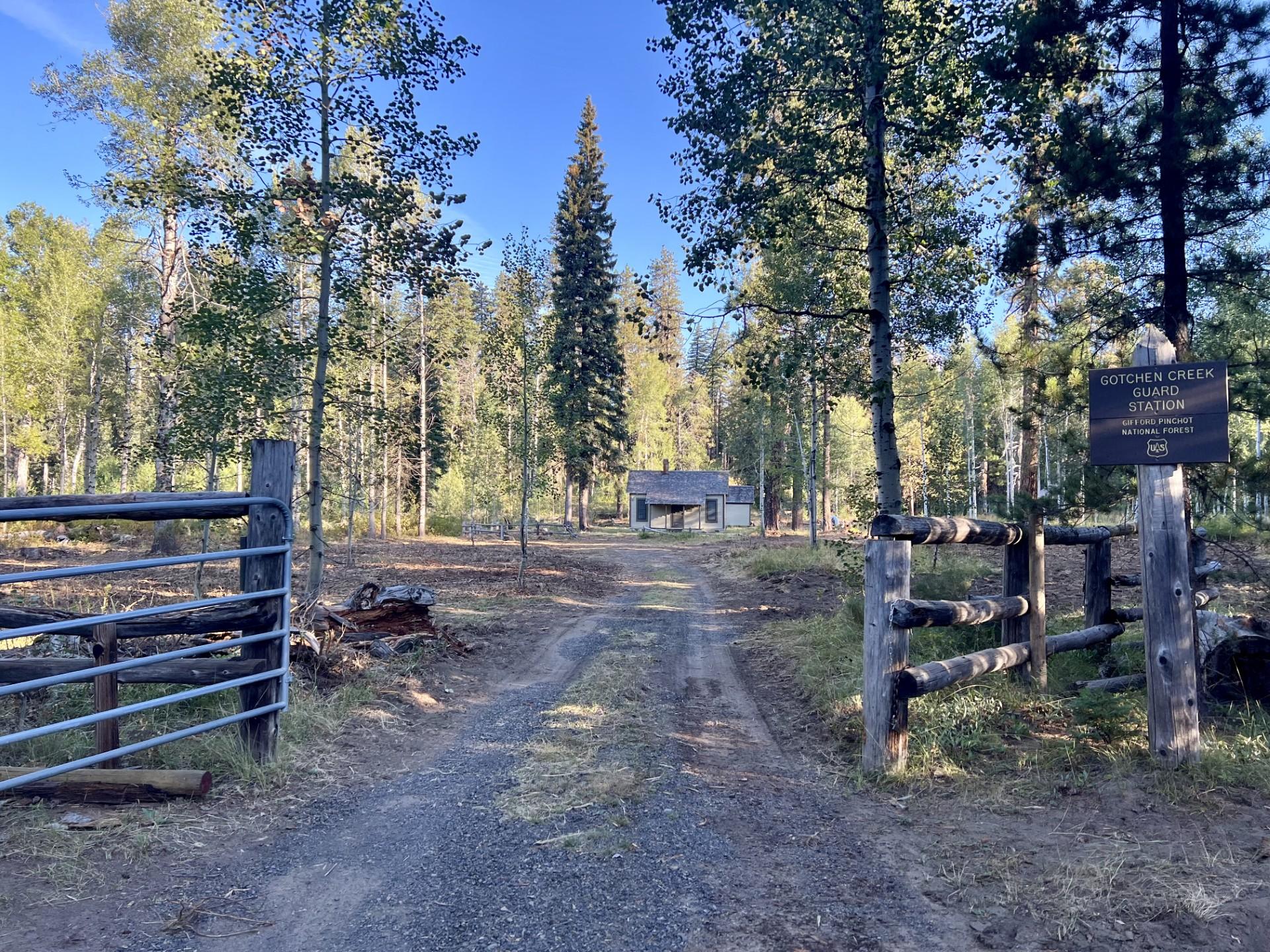
Gotchen Creek Guard Station after the protective fabric was removed and fuels were hauled away from near it. The Williams Mine Fire burned near here, but firefighters protected this historic structure.
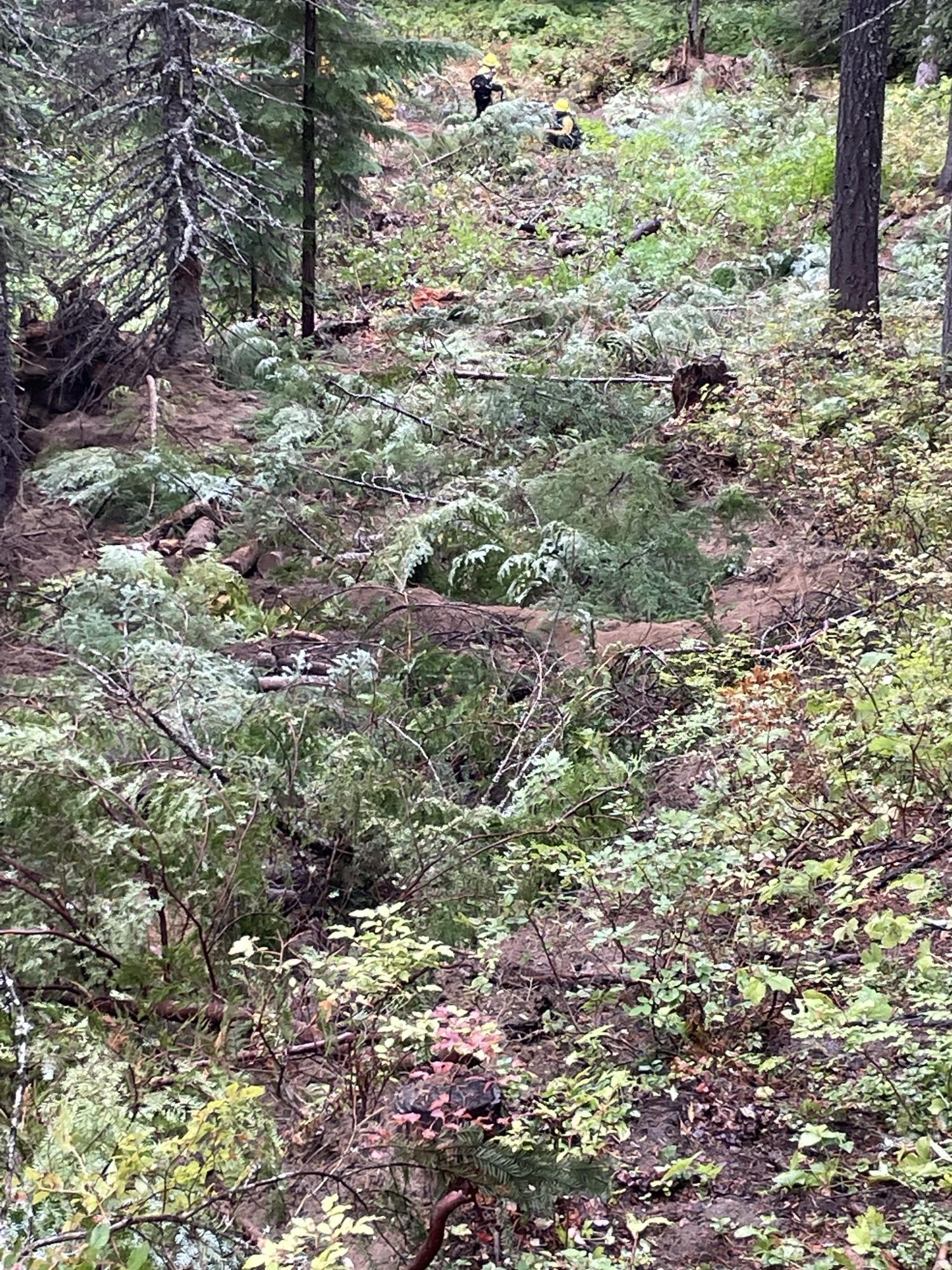
This is an example of the work done to repair the area where a dozer cut a fire line through the forest. This was an alternate line that the fire never reached. The Iron Mountain Type 2 hand crew re-established drainage along the line, then scattered limbs and other woody debris over the exposed soils. This will limit the erosion and help the fire line recover from the disturbance.
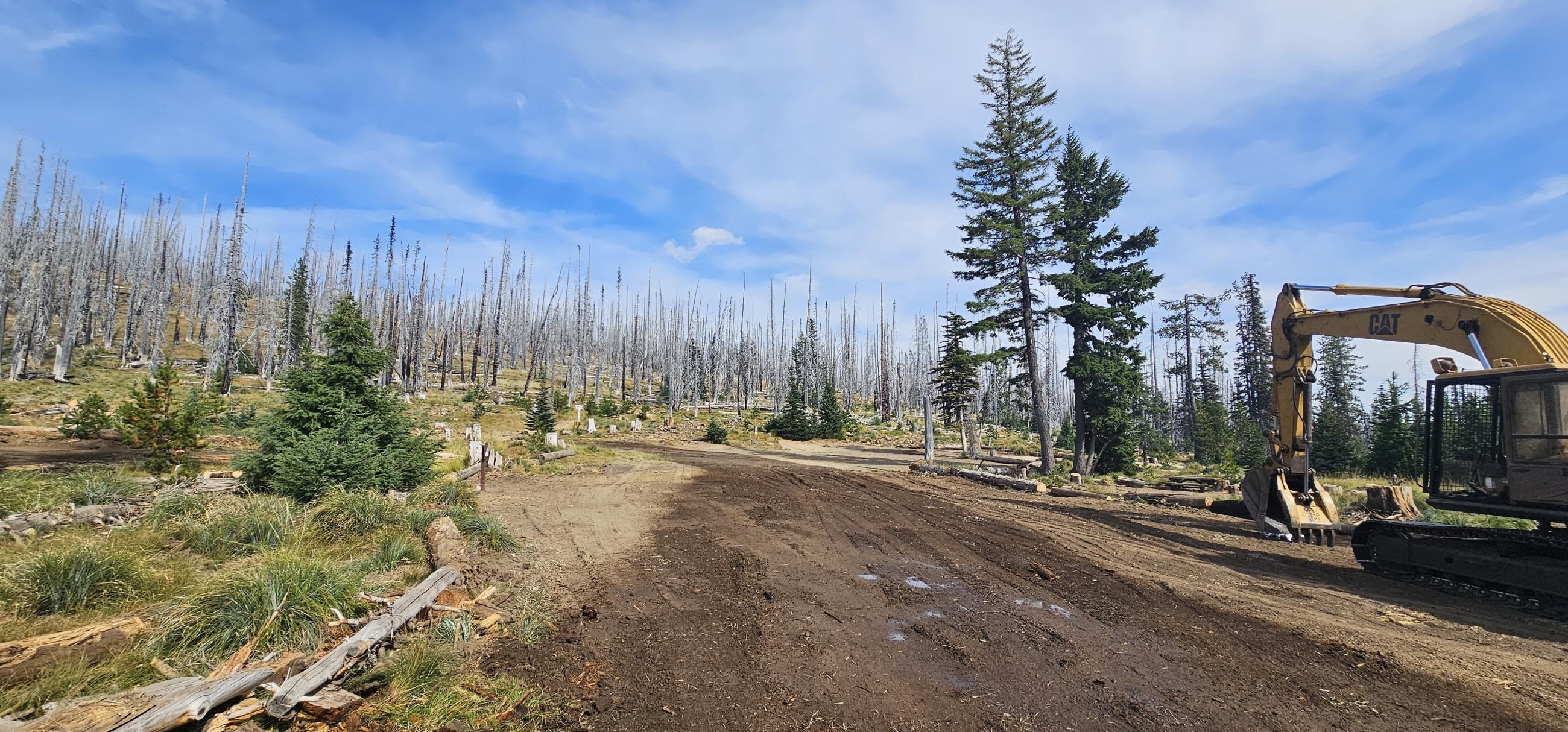
South Climb Trailhead area on 9/9/24. An excavator was being used to pull some of the dead and down wood from the parking area. The wood was hauled to a pile away from this area. This was part of the work done to prepare for the Williams Mine Fire to possibly burn uphill from the Morrison Creek drainage to the South Climb Trail. As of today 9/12/24, the fire has not reached this area. Cooler temperatures and higher humidity are slowing the fire's growth. Trees in the background were killed by a previous fire.
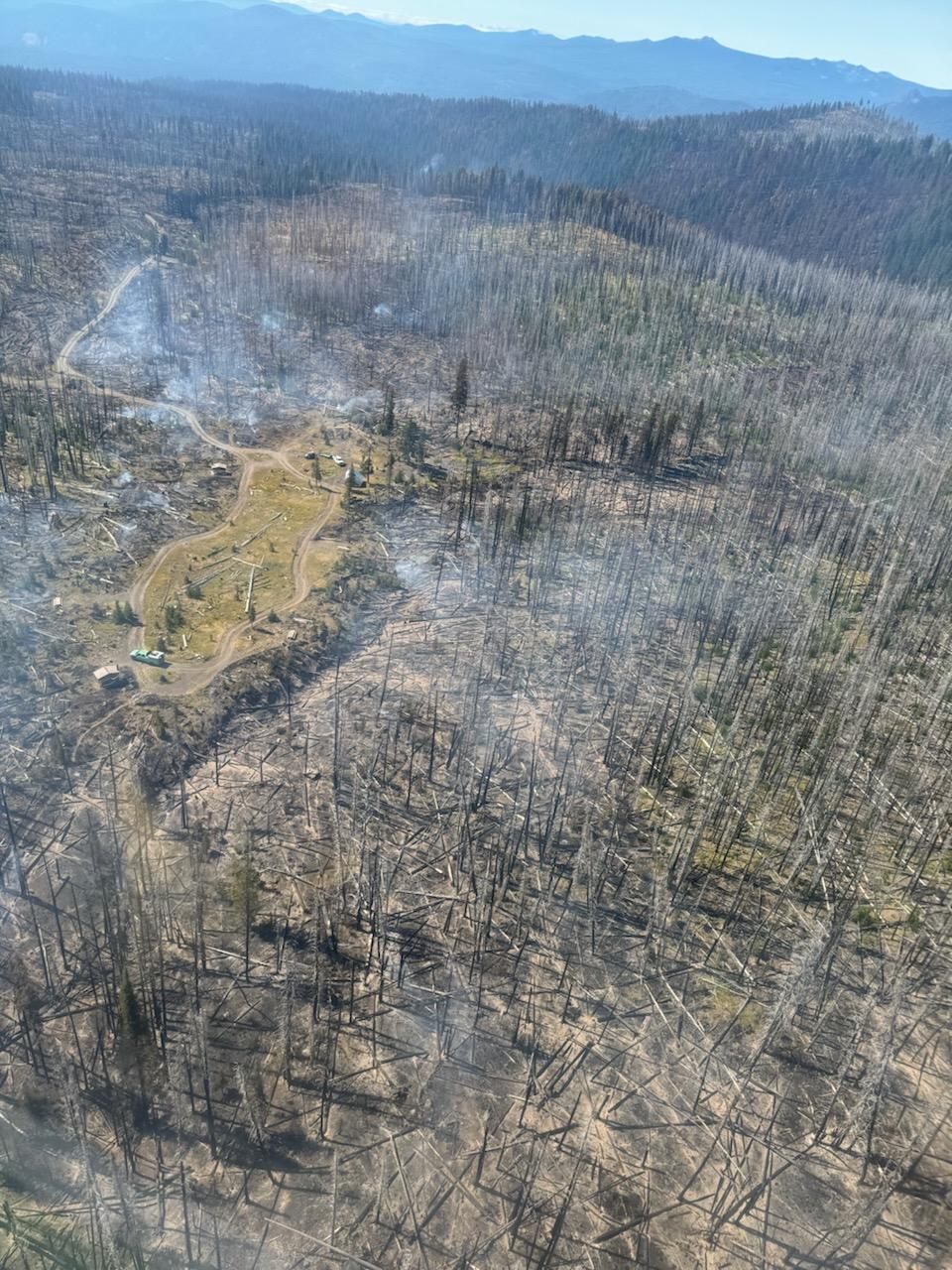
Morrison Shelter area after the Williams Mine Fire burned around it, as seen from the air on 9/4/24. Fire personnel cleared a lot of the fuels from around the building and parking area, and wrapped the shelter. This created a green island in the middle of the fire.
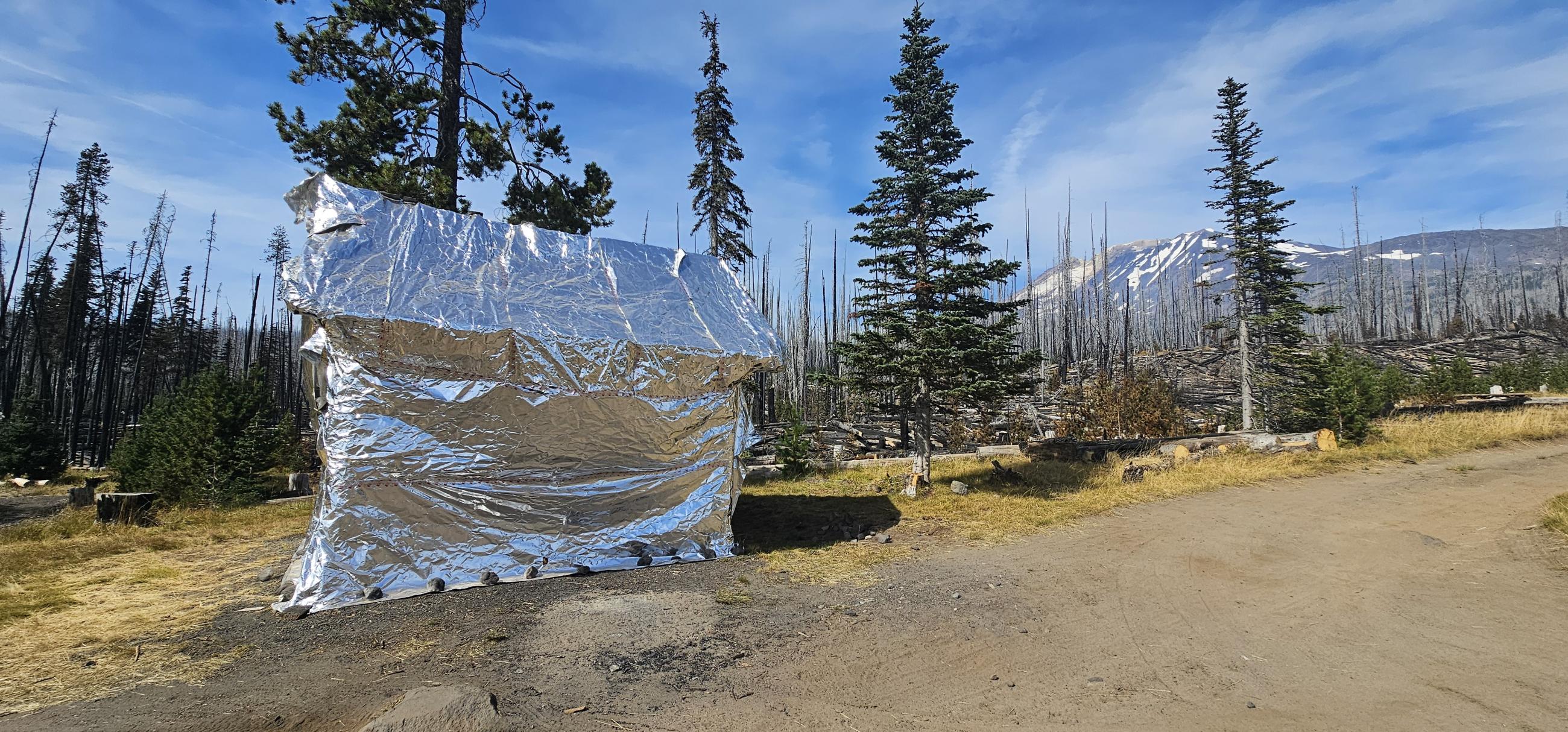
The Morrison Shelter on 9-9-24. On 9-2-24, a strategic firing operation was conducted to burn some of the fuels around the shelter. Firefighters had previously wrapped the shelter in protective material. The area in the background was burned in the 2012 Cascade Creek Fire, and has few living trees. The fire consumed some of the dead standing trees plus some of the fuels on the ground.
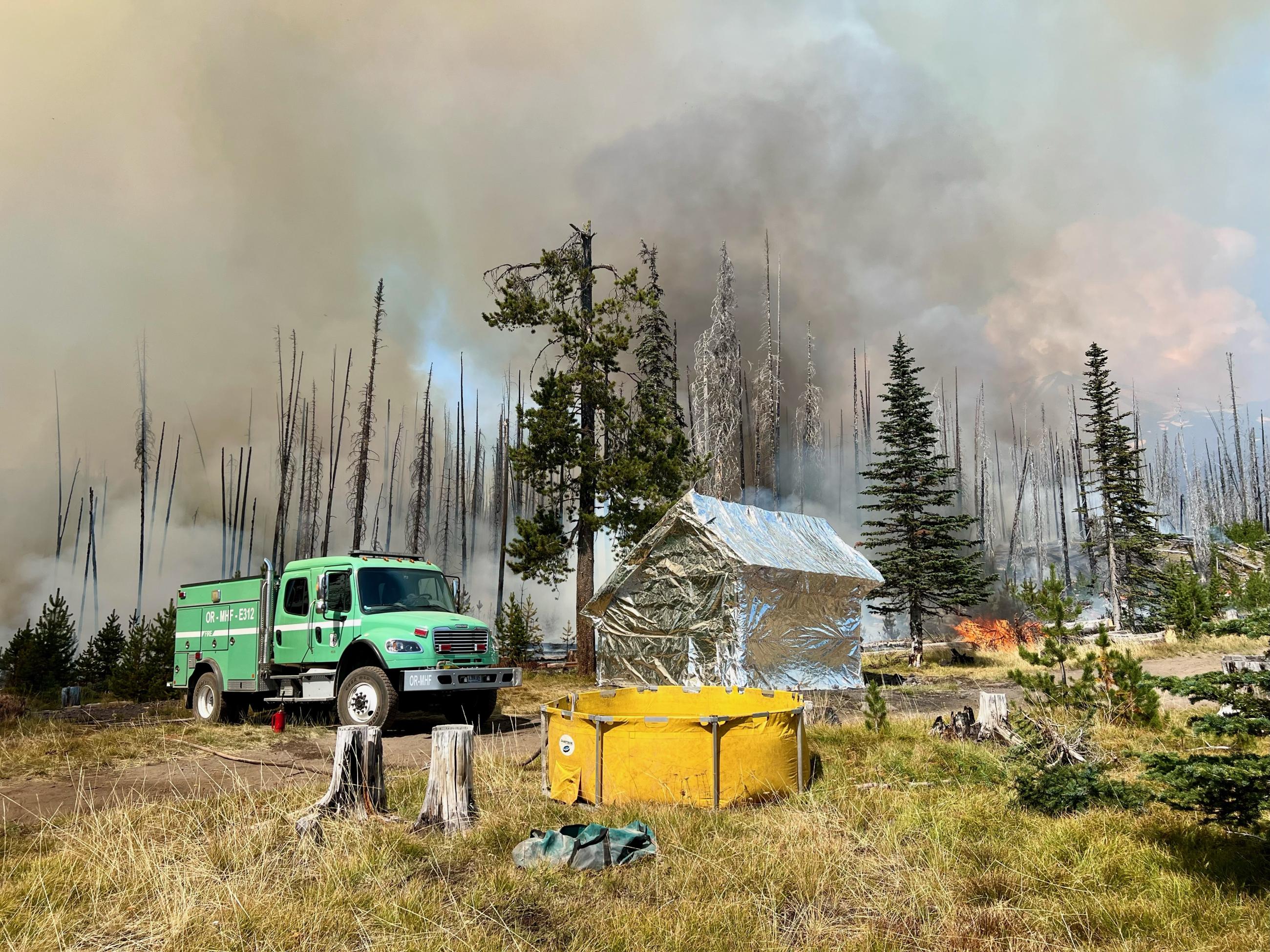
Strategic firing operations were completed by Morrison Shelter on 9-2-24. This reduced the amount of fuel near the shelter before the approaching edge of the main fire reached this area. The shelter was wrapped in protective fabric on 8-30-24. An engine from the Mt. Hood National Forest assisted with burn operations. In the foreground, a yellow portable water tank is available to provide a water source for work in this area.
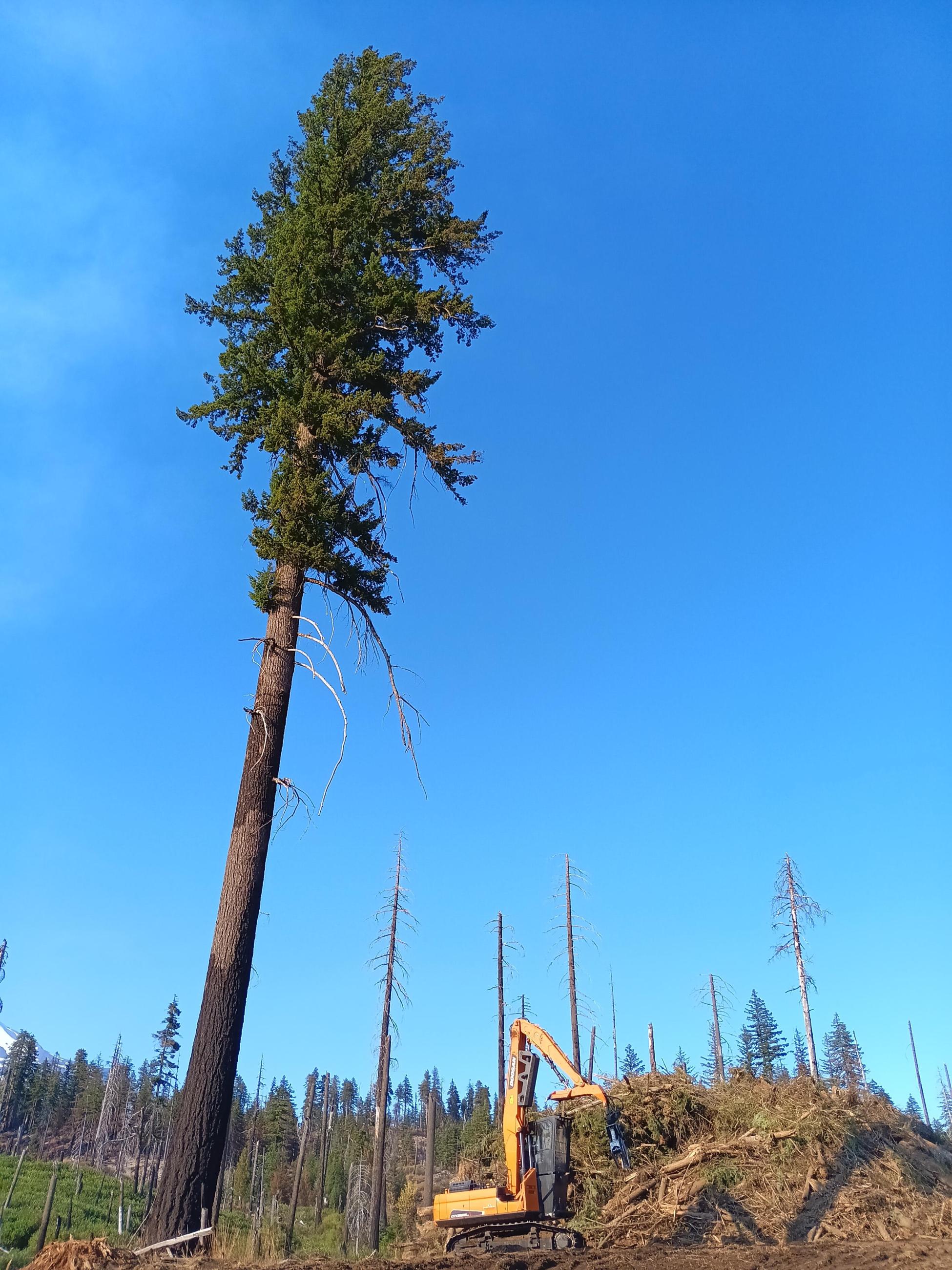
A tree that survived past fires towers over an excavator piling woody debris on the southeast side of Williams Mine Fire on August 31, 2024. This tree was tall enough that the heat didn't kill the foliage, and the bark was thick enough to insulate against the flames of Cascade Creek Fire in 2012. Most smaller trees were killed by the fire and have fallen or are standing dead snags. The excavator is piling brush, logs, and small trees into a large pile to reduce fuels near the fire.

 InciWeb
InciWeb